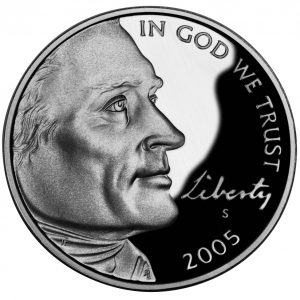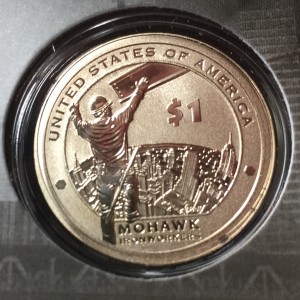 Since the introduction of the 50 State Quarters Program, there have been several changing design series on circulating coinage. All of the programs have been created to honor and celebrate the nation’s history in some way. It started in 1999 with the issuance of the quarter honoring Delaware, the first state to ratify the Constitution granting it the designation of being the first state to enter the Union.
Since the introduction of the 50 State Quarters Program, there have been several changing design series on circulating coinage. All of the programs have been created to honor and celebrate the nation’s history in some way. It started in 1999 with the issuance of the quarter honoring Delaware, the first state to ratify the Constitution granting it the designation of being the first state to enter the Union.
Since 1999, there has been the following coin series issued by the U.S. Mint:
- 2009 Lincoln Bicentennial One Cent Program
- Westward Journey Nickel Series™
- 50 State Quarters Program
- 2009 District of Columbia and U.S. Territories Quarters Program
- America the Beautiful Quarters® Program
- Native American $1 Coin
- Presidential $1 Coins
Although none of these series produced rare coins with the exception of errors and varieties, such as the 2004 Wisconsin extra leaf quarter and the 2005 Minnesota quarter with an extra tree, the only excitement was the novelty generated in 1999 with the new series.
Soon, the American Innovation $1 Coin will join this list. When the American Innovation $1 Coin Act (H.R. 770) finishes its procedural trek through Congress, it will be sent to the other end of Pennsylvania Avenue for the President’s signature. There is no indication that the President will veto this bill.
The 14-year program will honor “American innovation and significant innovation and pioneering efforts of individuals or groups from each of the 50 States, the District of Columbia, and the United States territories.” Four one-dollar coins will be issued each year and issued alongside the Native American Dollar.
Although there is a bias in the numismatic industry against modern coinage, there is a fun aspect of the changing coin designs. Aside from breaking up the monotony, there is an educational aspect that people should take advantage of, even if you have college degrees.
For example, why did the 2015 Native American $1 Coin feature the Mohawk Ironworkers? In short, the Mohawks were literally the backbones for which heavy ironwork relied upon in both Canada and the United States. Amongst their accomplishments are some of the famous landmarks of New York City including the Empire State Building, the Chrysler Building, and work above the 80th floor on the World Trade Center twin towers.Mohawk ironworkers were there following the attacks of September 11, 2001, to help clean up and rebuild the World Trade Center site. This is something I would not have known had they not appeared on the coin and asking why.
Regardless of the historical significance of these coins and the underappreciated beauty of the designs, the numismatic industry has not taken the opportunity to promote coin collecting using these changing programs. There is only one reason for the lack of interest from the community: ECONOMICS!
The American Numismatic Association is largely run by dealers who make their living by buying and selling rare coins and bullion. The trade in modern coinage, many items that anyone could find in pocket change, does not have a high rate of return. Therefore, most dealers are not interested.
Although dealers do have the right to earn a living the way they see fit, as part of the overall hobby, they tend to steer away from the modern coins and even downplay their significance to the hobby. This tends to perpetuate a myth that you cannot be a legitimate collector if you collect modern coins.
This attitude is a wasted opportunity for the industry. Aside from being an opportunity to promote the hobby but give people an outlet to learn something more than what they see on the cable news channels.
 One of the problems with this program can also make it a positive is what will each of the states choose to represent innovation in their state or territory? Promoting numismatics as “history in your hand” can also be a lesson in history to help each state decide what to chose to best represent them on a coin. This is the best opportunity to use numismatics to promote the hobby and history by providing a conduit for discussion in each state.
One of the problems with this program can also make it a positive is what will each of the states choose to represent innovation in their state or territory? Promoting numismatics as “history in your hand” can also be a lesson in history to help each state decide what to chose to best represent them on a coin. This is the best opportunity to use numismatics to promote the hobby and history by providing a conduit for discussion in each state.
What would constitute a state’s great innovation or innovator? Will New Jersey choose Thomas Edison? Will Alexander Graham Bell be Massachusetts’ choice? And what about Pennsylvania? There could be an interesting discussion about honoring Benjamin Franklin, George Westinghouse, or even Andrew Carnegie especially since neither of these men were born in the United States.
There will be a lot of innovation to chose from because there has been a lot of innovation during the country’s 242 years of existence. If you missed the announcement by the United States Patent and Trademark Office (USPTO), they issued the 10 millionth patent on Tuesday, June 19, 2018. And that does not count the patents issued before 1836 when the numbering system was reset by the Patent Act of 1836.
However, the most significant problem with the Innovation $1 Coin is that it is a one-dollar coin. As long as Congress continues to not listen to reason and stops issuing the paper dollar, it does not matter what they do with the coin, it is not going to generate enough interest because the coin will not circulate.
 Regardless of how many Government Accountability Office (GAO) reports are issued (GAO-13-164T) or the number of experts that endorse the elimination of the paper dollar for the coin, Congress refuses to address the issue. They point to surveys that show that most of the people older than 50 are against removing the paper dollar. Since this population constitutes the majority of the voters and, more significantly, campaign donors, the politicians are not about to make those people upset.
Regardless of how many Government Accountability Office (GAO) reports are issued (GAO-13-164T) or the number of experts that endorse the elimination of the paper dollar for the coin, Congress refuses to address the issue. They point to surveys that show that most of the people older than 50 are against removing the paper dollar. Since this population constitutes the majority of the voters and, more significantly, campaign donors, the politicians are not about to make those people upset.
In many cases, the Innovation $1 Coin will be a repeat of history. Its potential popularity will fail as Congress hopes to socially engineer excitement in the way they tried to do for the Presidential dollar coins. That was deemed a failure that forced then-Treasury Secretary Tim Geithner to order the U.S. Mint to reduce the production of these coins. This was after certain members of Congress showed its collective stupidy by introducing a bill to prematurely end the program.
There is so much potential for the Innovation $1 Coin to be a great program and to generate publicity for the hobby. But as long as the coin does not circulate and Congress refuses to deal with the situation appropriately, it will be a coin that only existing collectors will take interest in and become a lost opportunity for everyone.


